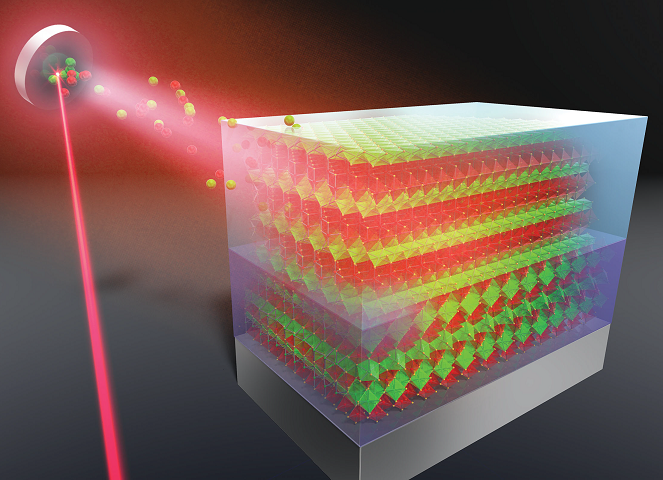Magnetic properties of epitaxial TmFe2O4 thin film with anomalous interface structure

Our work on TmFe2O4 thin film is published in the Journal of Material Chemistry C. This is a collaborative work with Tohoku Univ. and Hokkaido Univ./ Kim Youjin(D3)を筆頭著者とする研究論文が Journal of Materials Chemistry C に掲載されました。東北大学と北海道大学との共同研究成果です
DOI: 10.1039/D0TC01367F (Paper) J. Mater. Chem. C, 2020
TmFe2O4, one of RFe2O4 family (R = Sc, Y, In, and Dy to Lu), shows both charge and spin orderings and exhibit interesting dielectric and magnetic phenomena. We have grown epitaxial thin films of TmFe2O4 on (111)-oriented YSZ (yttria-stabilized zirconia) substrates via a pulsed laser deposition method and explored their interface structure at atomistic level and magnetic properties. Out-of-plane X-ray diffraction and reciprocal space mapping reveal that TmFe2O4 thin film grows with c-axis perpendicular to the (111) surface of the YSZ substrate. The structure of TmFe2O4/YSZ interface was investigated by using scanning transmission electron microscopy (STEM) and electron energy loss spectroscopy (EELS). Interestingly, hexagonal TmFeO3-δ phase has been found at the interface between the TmFe2O4 thin film and the YSZ substrate with Tm3+-rich region at the upper side of the substrate. We suggest a possible growth mechanism based on the structural analysis. The TmFe2O4 itself exhibits spin or cluster glass transition, as verified by the fact that the external magnetic field dependence of irreversible transition temperature is described well in terms of the de Almeida-Thouless line and that aging-memory effect is clearly observed. Furthermore, field-cooled hysteresis loops and training effect clearly demonstrate the presence of intrinsic exchange bias at 100 K due to the unique magnetic structure of interface./ RFe2O4ファミリーの1つであるTmFe2O4(R = Sc、Y、In、およびDyからLu)は、電荷とスピンの両方の順序を示し、興味深い誘電および磁気現象を示します。 (111)配向YSZ(イットリア安定化ジルコニア)基板上にパルスレーザー蒸着法を介してTmFe2O4のエピタキシャル薄膜を成長させ、原子レベルでの界面構造と磁気特性を調べました。面外X線回折と相互空間マッピングにより、TmFe2O4薄膜がYSZ基板の(111)面に垂直なc軸で成長することがわかります。 TmFe2O4 / YSZ界面の構造を、走査型透過電子顕微鏡(STEM)と電子エネルギー損失分光法(EELS)を使用して調査しました。興味深いことに、六角形のTmFeO3-δ相は、TmFe2O4薄膜とYSZ基板の界面に見られ、基板の上側にTm3 +リッチ領域があります。構造解析に基づいて可能な成長メカニズムを提案します。 TmFe2O4自体は、スピンまたはクラスターガラス転移を示します。これは、不可逆転移温度の外部磁場依存性がde Almeida-Thouless線でよく説明され、エージングメモリ効果が明確に観察されるという事実によって検証されます。さらに、フィールド冷却ヒステリシスループとトレーニング効果は、界面の独自の磁気構造により、100 Kでの固有の交換バイアスの存在を明確に示しています。